Everyone here in the Auckland Studio is getting along with their Launch Day projects:
Patch is editing my interview with Phil (and looks none too pleased with the interruption):
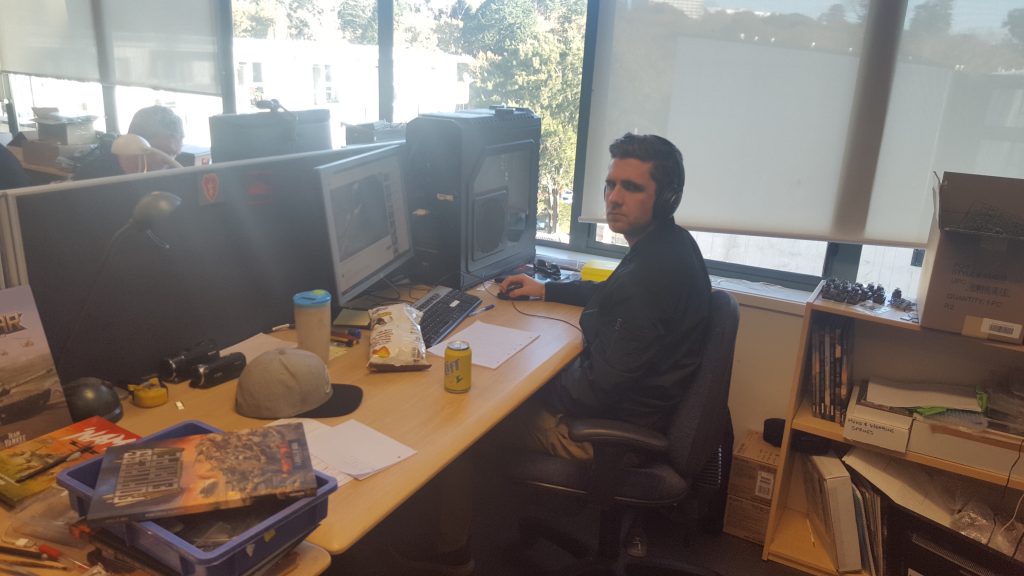
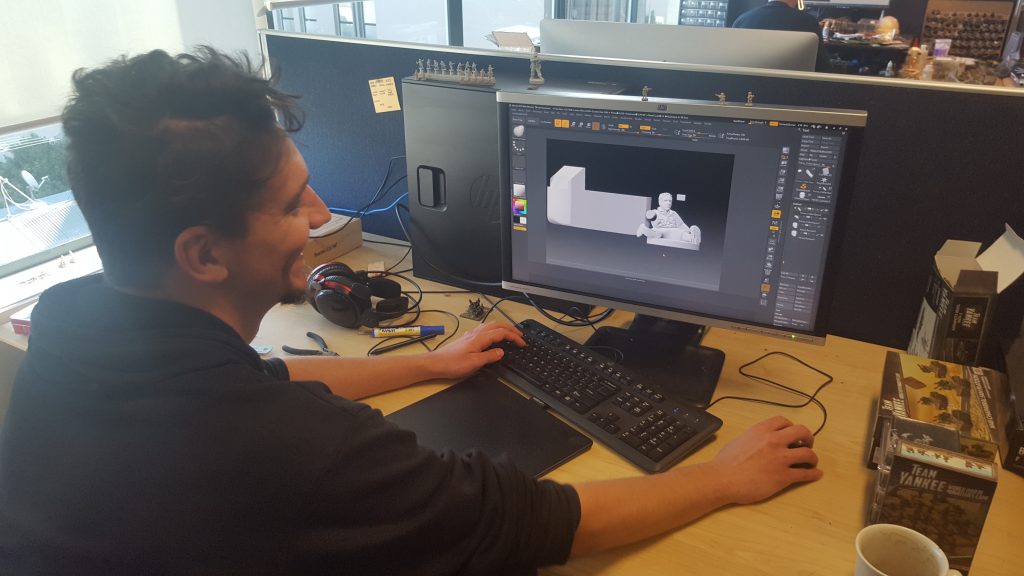
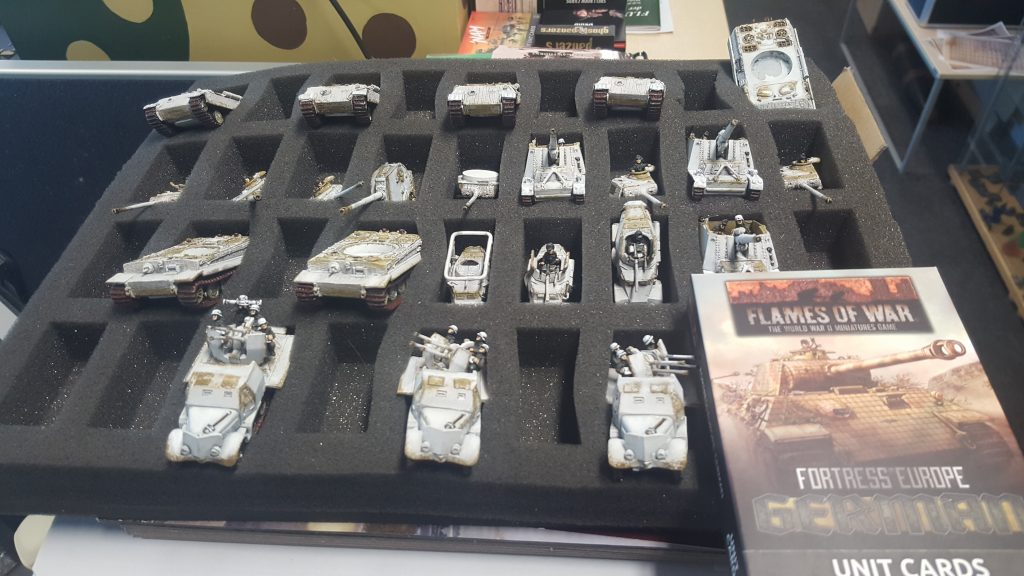
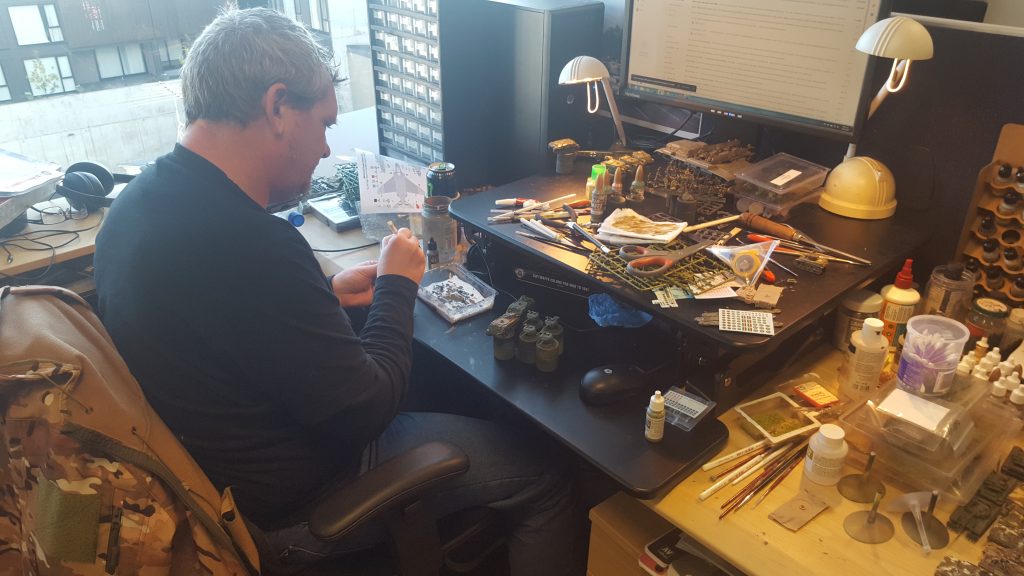
Join the Battlefront team as we launch Bagration: Soviet
Everyone here in the Auckland Studio is getting along with their Launch Day projects:
Patch is editing my interview with Phil (and looks none too pleased with the interruption):




with Alexander Nebesky
When Fortress Europe arrives in June, Flames Of War players will be able to bring forward their Mid War forces to the Late War battlefields with a collection of formations comprising largely of units already existent in our Mid War range.
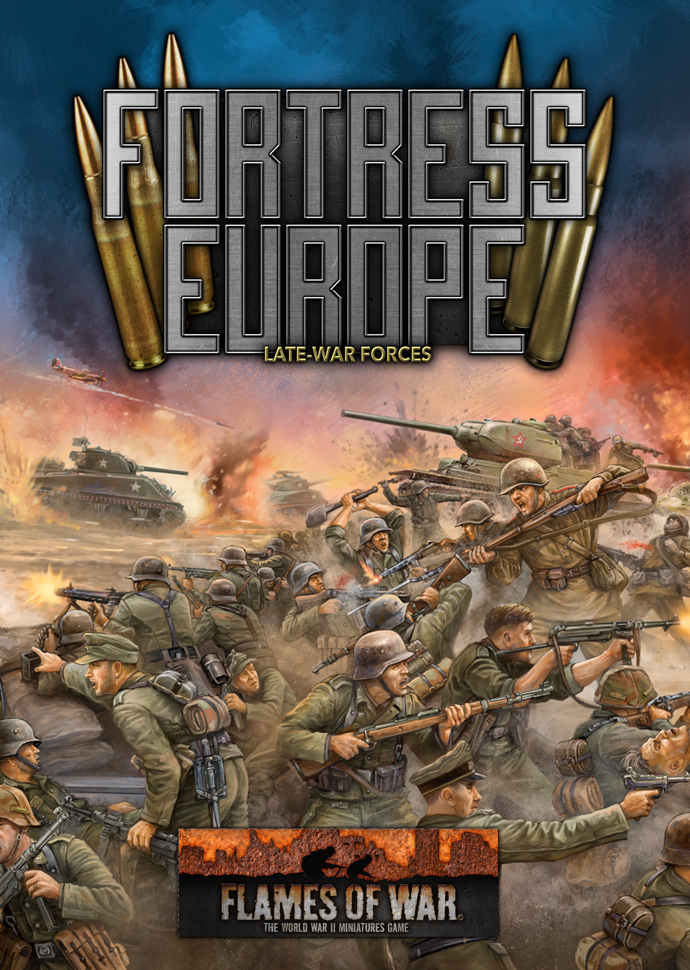
M5 Stuart- The M5 Stuart is listed as an option for both British and American forces in Fortress Europe. Our brand new plastic M5 Stuart sprue is part of both our American and British Starter Forces and will be available as part of our July D-Day: American releases, so until then, grab a Starter Force or proxy in your Mid War M3 Stuarts. [UBX56]
StuG: The StuG in Fortress Europe is the same kit as the StuG (Late) from Ghost Panzers, not the StuG (Early) from Iron Cross. [GBX123]
Panzerfaust: Although the new Panzerfausts special rule doesn’t require you to actually model any specific bases with Panzerfausts on them, we do like to do it for the look of it all. If you also want to sprinkle your Grenadier and Panzergrenadier platoons with Panzerfausts you can pick up [GSO113] from the web store.
Panzerschreck: The Fortress Europe Grenadier platoon can take a Panzerschreck anti-tank weapon for 2 points. If you want to add a Panzerschreck team to your platoon you’ll need [GSO112] from the online store.
Piat: The British Motor and Rifle platoons both receive an upgrade in anti-tank capability with the welcome addition of the Piat. To add a Piat to your Mid War British Desert infantry use [BSO103], a Piat team dressed in uniforms for the Italian theatre to match your Eighth Army figures, which you can pick up from the online store.
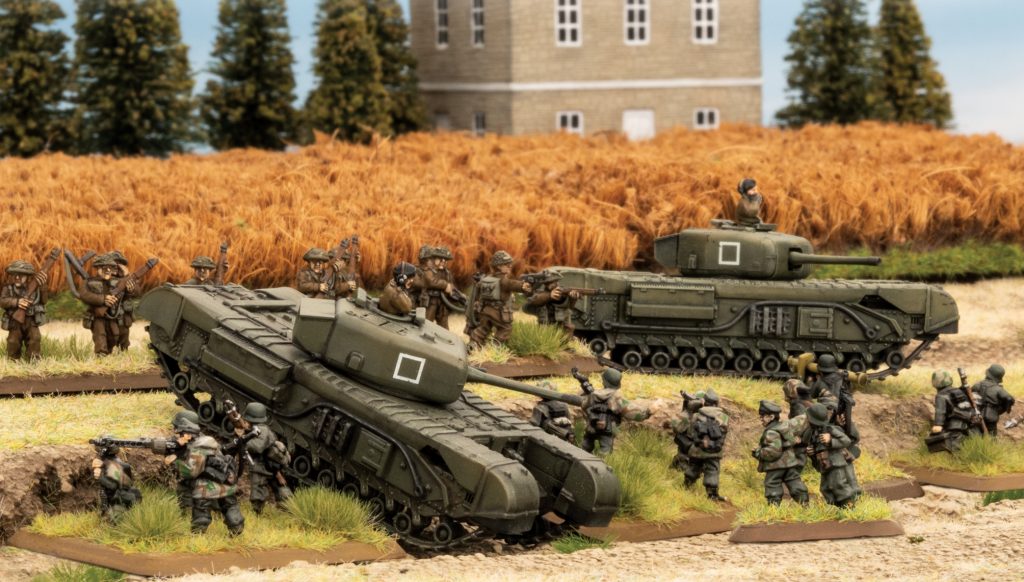
with Andrew Haught
Join Andrew as he walks you through our upcoming Hobby League! Be sure to pester your local store or club to get a copy so you and your gaming buddies can help grow a Flames Of War group in your community!
with The Big Four, NZ Studio
On June 6, 1944, thousands of men were nervously waiting in landing craft, transport aircraft and bunkers as the fate of the world rested on their shoulders. The liberation of Europe was about to begin.
Collectively we (the “Big Four”) have been playing Flames Of War for around 50 years and we think that the Late War Journey is the one of the most exciting things to happen to the game since its original release back in 2001. Now, with people all around the world taking their first look at Late War and building new armies, we wanted to come on the journey with you and take a fresh look at our favourite period of Flames Of War.
Starting with the release of Fortress Europe we will be creating armies using our new Army Deals as the basis, building and painting from scratch, and then getting them on the tabletop to play some games…
Follow the Big Four on their own blog here…
with Phil Yates
I’m looking forward to the new late war books and trying out my various armies to see how they perform. I have nine mid and late-war forces that I could use, so let’s see how they go.
Late War British
Let’s start with my biggest collection, the Desert Rats in Normandy. I have a Motor Company and a Cromwell Armoured Squadron.
The Motor Company is fairly straightforward and can easily be built from Fortress Europe, although I’ll have to wait for the D-Day: British book next year for the specifically Desert Rats version with slightly different ratings and the command cards for their transport vehicles. My company has:
In Fortress Europe that comes to 94 points, so there’s room to add my Typhoons (using the Kittyhawk card for the moment) to take it to a round 100 points. For comparison, the same force from the old Overlord book comes to 1610 points* without the Typhoons.
With my Cromwell Armoured Squadron, I have two choices: field them as Shermans in the meantime, or wait for the D-Day: British book. I’d rather get them onto the table and have a few games, even if my Cromwells won’t be as fast as I’d like (but then again, the extra speed will be an exciting bonus when the Cromwell arrives!).
That comes to 97 points, so I might take the opportunity to throw in a Daimler armoured car troop as well.
Late War German
My German forces are a bit smaller with a very small Tiger SS Tank Company and a FHH Panzergrenadier Company.
My Tiger SS Tank Company is normally commanded by Michael Wittmann for a tiny, but elite force. Using Fortress Europe, I can field this six-tank company without Wittmann (I’ll have to wait for D-Day: Waffen-SS to add him). The company has:
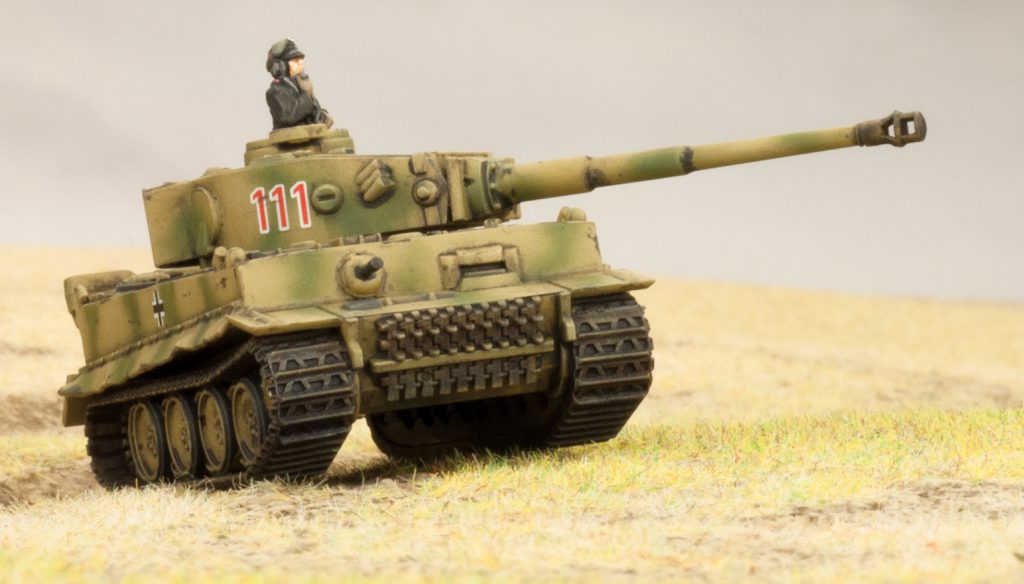
Six tanks for 72 points, so that’s a better deal than before (it would have been 1300 points previously*). To bring the force up to 100 points, I could add a Panzergrenadier Platoon from my FHH Panzergrenadier Company and finally get around to adding some Sd Kfz 7/1 quad 20mm AA to my collection (although I could use some of my single 2cm AA from FHH in the meanwhile..
It will be a while before we get to the Lorraine battles where the Feldherrnhalle (FHH) panzer brigade fought, so meanwhile I’ll just field them as a normal Panzergrenadier Company. It would have:
That comes out at 96 points in Fortress Europe, so that’s pretty good. I’ll have to ponder what I might add to use those last four points.
So far then, it’s looking good for a conversion across from the old books to the new. I’ll have to wait a little for a perfect translation for a couple of my forces, but they’ll be fun to play in the meanwhile.
Mid War Forces
So what about my Mid-War forces? How will they fare? I have a Grant Armoured Squadron, a Panzer III Tank Company, and two variants of Soviet Tank Battalions.
My Enemy At the Gates Soviet mixed tank battalion isn’t really a good fit for Late War as both the KV-1 and T-60 are pretty much long gone by then (there were apparently a handful of KV-1 still fighting around Leningrad though!), although if I used the T-60s as T-70s and ignored the odd organisation, I could probably make a small 60-point force.
On the other hand, the Red Banner version transfers over nicely (especially if I get that SMG Company painted!).
That all comes in at 51 points under Fortress Europe, so I might need to invest in another T-34 company to replace the T-70s, and possibly model some of the new tanks as up-gunned T-34/85. That would give me 28 tanks for 100 points!
My Grant Armoured Squadron really doesn’t cross over to Late War. The Grant was already on its way out at the Battle of El Alamein where my force fought, so it would be optimistic to expect to see it in battles nearly two years later. On the other hand, if I didn’t already have a late war armoured squadron and I wanted to give a mate a game, I’d probably consider fielding them as Shermans while I worked on a new Late-War force.
My Panzer III Tank Company would translate across a bit better as Fortress Europe has a Mixed Panzer III & IV Tank Company. My models are much earlier marks than you’d find in early 1944, and are painted in desert sand camouflage, but they’d do at a pinch, but it would have to be a small game as my whole force wouldn’t be much over 60 points – even proxying them as later model Panzers!
All-in-all though, if I didn’t have any Late-War forces and wanted to give it a go, I could certainly try out a few games using my Mid-War forces while I built up my Late-War collection.
What About the Romanians?
I also have a Late-War Romanian Panzer IV Tank Company. If I field it using the German Panzer IV Tank Company formation, it gets a bit of a skill and reliability upgrade, but works fine. Just focussing on the tanks, I’d have:
Since they are relatively better, and hence more expensive, I’d need to drop some tanks to get my 100mm howitzers in there, and even more to field a small infantry company. Or, looking at it from the bright side, I can field nearly 150 points for a really big game!
And the Score is…
Well, out of nine forces, five transfer over almost without a hitch, although I would need another ten T-34s to get to 100 points with my Soviets. Of the other four, I’ll need to proxy my Cromwells as Shermans to make that one work, and the other three Mid-War forces could be transferred across in some form, even though they are 1942 forces, but since I already have Late-War forces, I don’t think I’ll bother.
All-in-all, transferring over to Late War using the new books looks like it will be fairly straightforward for me..
*The old books used a different points scale with typical forces being 1500 to 1750 points rather than 100 points.
Join Chris as he unboxes the British Starter Force:
with Phil Yates
After defeating the Germans and Italians in North Africa, the British took the fight to the enemy, invading Italy. At this point, the British Army was in transition from the Desert Rats of Africa to the much larger army that invaded France on D-Day. This book covers that transition. You can either build a mid-war style force to fight in Italy, or get a head start on a British force for the battles in Normandy.
The workhorse of the British armoured forces is the venerable 75mm-armed Sherman tank. After encountering the new generation of German heavy tanks, the British developed the Sherman Firefly, replacing the 75mm gun with a 17pdr gun. Typical platoons mix Shermans and Fireflies together to make cheap, versatile platoons that are capable of handling most situations, especially when backed by their motor infantry platoons.
Some situations require a bit more armour. The Churchill maybe slower than the Sherman, but its heavier armour means it can take heavier hits. Churchills are ideally paired with infantry, where their lack of speed is not a problem.
British infantry are assault experts, hitting hard and then staying put. On top of this, in the right situation, rifle companies can launch night attacks—giving them much needed cover as they rush towards their objectives.
A British force is like a golf bag, it has a club for every stroke. The key is picking the tool for the job at hand.
Sherman Armoured Squadron
Churchill Italy Armoured Squadron
Rifle Company
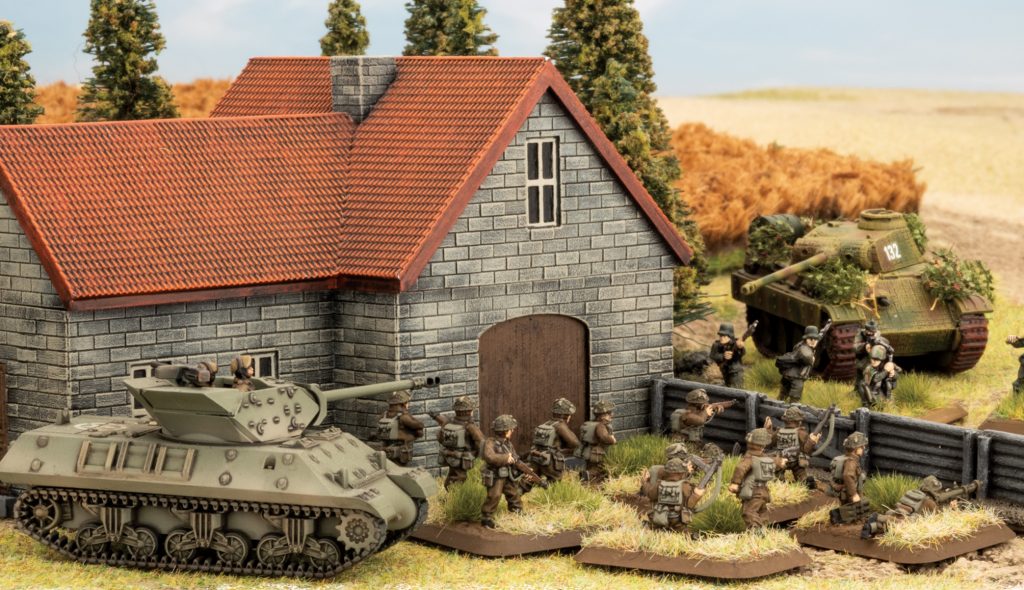
Motor Company

Support
How Do the British Play?
The Germans in Fortress Europe are among the last of the old guard, trained before the tide turned, in the days when Germany was winning the war. They are rated as Confident, Veteran, and Careful, so are some of the best trained and most experienced troops available. Their faith in the thousand-year ‘Third Reich’ gives them a better Last Stand rating, so you can trust them to hang in there, even when things look bad.
This training follows in the footsteps of their legendary forebears, the stormtroopers of the First World War. Their Stormtroopers ability allows German troops to attempt two movement orders in each turn. Combined with their high skill rating, this allows them to fight with a finesse that no other army can match.
To go with this superb level of tactical prowess, German engineering provides you with the best tanks, such as the Panther and Tiger, and the most powerful guns, like the long 8.8cm which can penetrate any tank with ease. Even older tanks like the Panzer III have been brought up to the latest standards with bazooka skirts and HEAT ammunition.
In summary, a successful German force will use their superiority in equipment, training, skill, and cleverness, combined with a good dose of aggression, to keep the initiative, hit the enemy in their weak spots, while minimising the enemy’s opportunities to hit them back.
What to Expect in D-Day: British
Fortress Europe forces will transfer easily to D-Day: British and form the basis of solid Late War forces, ready to add on all the new kit that will appear. D-Day will bring new tanks like the speedy Cromwell and unarmoured and upgunned late-model Churchills — including the savage Churchill Crocodile flame-thrower, the most powerful flame-tank in existence. For air support, they’ll have the frighteningly-effective rocket-firing Typhoon fighter-bombers.
To reflect the harsh fighting in Normandy, D-Day: British will have two flavours. The fresh divisions are a little less eager to walk into the meat grinder than the troops in Italy, demanding heavy fire support to suppress the enemy, while the old hands of the Desert Rats are wondering why they are still leading the charge with untried troops sitting in Britain, so are reluctant to take unnecessary risks.
There will be lots of totally new options for a whole new D-Day force as well.
This isn’t to say that a force from Fortress Europe will be superseded. The troops in Italy can still hold their own against any comers, the ‘D-Day Dodgers’ just don’t have as many flash new toys as the troops in Normandy. Whether you stay in Italy, or are preparing to land in Normandy, Fortress Europe is the place for any British player to start their journey.
with Alex and Calum
To help newer players joining in with Flames Of War V4 we have put together a new series of videos to help you pick up the basics of the game. Here are the first few installments, and be sure to keep your Rule Book on hand!
Join Casey as he unboxes the Soviet Starter Force:
Fortress Europe has gone live on Forces, so now you can get to putting together a Late War list for your Launch Weekend battles!
Get cracking on your German, Soviet, British, or American Late War lists here…